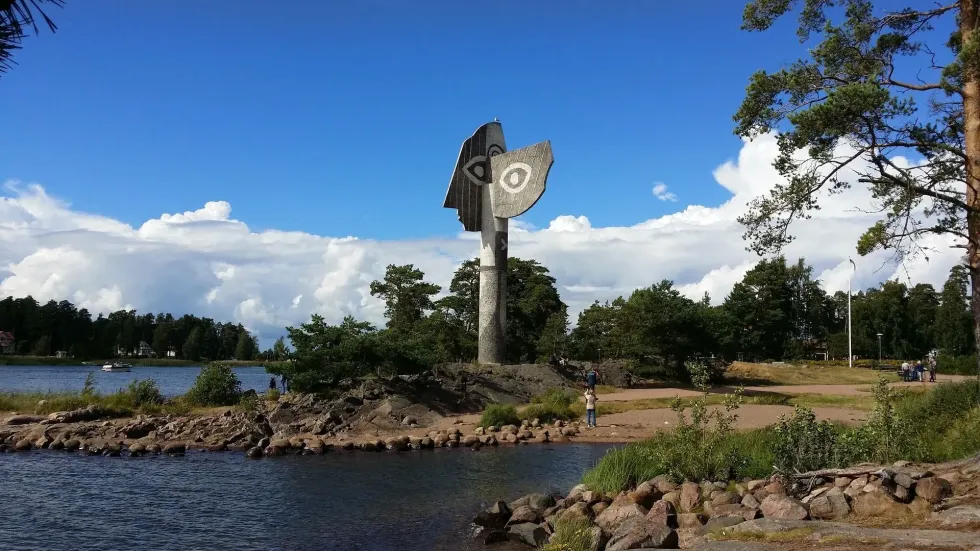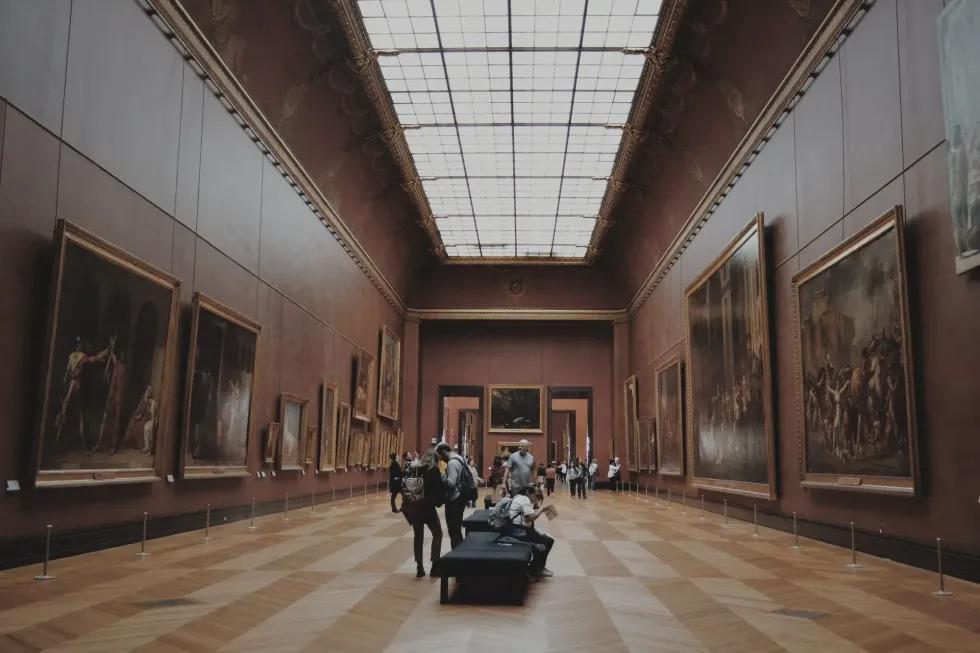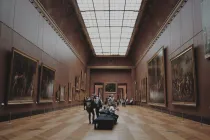101+ Astonishing Facts About Spanish Arts And Crafts

Spain is home to many great artists and their masterpieces!
Spanish art and architecture have a unique heritage that has produced many influential artists. It has been a key upholder to Western art.
Spain is a southwestern European country and is officially known as the Kingdom of Spain. It is notable for its architectural splendors and has 49 UNESCO World Heritage sites in the world.
The art in Spain was open to an array of cultural influences due to geographical, historical, and generational diversity. Although Spanish art was vastly affected by Germany, France, and Italy during the Neoclassical and Baroque periods, it had unique characteristics that were somewhat explained by the Moorish heritage in Spain.
In this article, you can discover more about Spanish art and traditional crafts. So, let's dive in to learn in detail.
Handicrafts
Spain is known for many traditional handicrafts amongst the culturally rich countries in the world. A vast range of high-quality handicrafts are available in Spain and are part of their tradition and culture. Below you will find some facts about Spain's most popular traditional handicrafts.
- In Spanish, the word 'artesanía' means crafts.
- Hand-made decorative pottery from flower pots to jugs, tiles, and window boxes in Talavera de la Reina dates back centuries.
- In Sargadelos (Galicia), you can find great ceramics that are generally embellished with floral designs.
- The internationally recognized fine porcelain company 'Lladró' is in Valencia, Spain.
- Toledo, the ancient city of Spain, is well-known for its traditional crafts such as antique-inspired swords, damascene metalwork, and hand-made marzipan (almond candies).
- Marquetry, known as Taracea in Spanish, is a unique local craft in Granada, Spain.
- Marquetry is the process of decorating objects such as furniture by creating patterns and designs using thin layers of wood, shell, or ivory.
- This art form has been produced since the 14th century.
- Tenerife, the finest hand-made lace, is found in Spain. It was named after the area where it was first created. This sheer craft has been passed down from generation to generation.
- Madrid is home to Spanish fans (Abanicos), the making of which is one of the most known Spanish crafts.
- The bright and intricate designs are hand-painted onto a fan that is made from wood and fabric.
- Weaving is the most venerable tradition that produces famous Spanish rugs.
- Murcia, Caceres, and Granada are known for their captivating, hand-woven rugs.
- In Toledo, artisans create fine jewelry made using the traditional Moorish art called Damascene.
- Damascene is the art of creating a decorative pattern by inlaying gold or silver threads into steel.
- Salamanca is another handicraft used to decorate traditional costumes created from pieces of silver.
- Leatherwork, especially renowned Andalusian leatherwork, is another outstanding traditional craftwork produced in different regions of Spain.
- Cordobanes and Guadamecies are hand-made, luxury-molded, colored leather produced from tanned goat's hides, and are used for decoration.
- High-quality hand-made guitars are made mainly in Granada and are used as musical complements to the Spanish Flamenco.
- Textile production is one of the most famous traditional works of Spain.
- Numerous hand-made products with unique designs include scarves, blouses, napkins, tablecloths, and other accessories, which are popular handicrafts globally.
Art
Many famous artists in history lived and worked in Spain. Although Picasso's name is invariably at the top of the list, many victorious Spanish painters have influenced Spanish art and architecture.
- Spanish paintings had a very important contribution to the Surrealist and Cubist movements.
- The period from the early 16th to the late 17th century is known as the Spanish Golden Age.
- During this era, Spain prospered in art and writing and was a significant contributor to European art history.
- The most celebrated artists of the Spanish Golden Age are Diego Velázquez, El Greco, Francisco Zurbarán and Murillo.
- Some of the most prolific Spanish artists of the modern era who were deeply influenced by their works in the history of art include Pablo Picasso, José de Ribera, Salvador Dali, and Francisco Goya.
- Francisco de Zurbarán was best known for the use of chiaroscuro in his renowned paintings.
- His works are dedicated to religion and faith, evoking intense emotions for those with a belief in God.
- In the Baroque period, one of the most famous Spanish painters, Diego Velázquez, created the most splendid portraits, such as Las Hilanderas and Las Meninas.
- During the historical period, Francisco Goya painted the Spanish Independence War. This involved the rise of contemporary nation-states and the fights between absolutists and liberals.
- Antoni Gaudi was a renowned Spanish architect born in 1852 in Spain.
- He is familiarly known as the face of Catalan architecture and his artwork is inspired by nature and modernism.
- The Sagrada Familia in Barcelona is one of the most famous works of Antoni Gaudi, known for its unique style, but it remains unfinished.
- Antoni Gaudi was nicknamed 'God's Architect'.
- Between 1984 and 2005, UNESCO declared seven of his artworks as World Heritage Sites.
- The prominent Spanish painter and sculptor Pablo Ruiz Picasso was born in Malaga, Spain, in 1881.
- The incredibly empirical Picasso was not only known for his paintings but also his written poetry.
- In his life, Picasso produced over 150,000 different works including paintings, poems, and sculptures.
- Pablo Picasso's most famous work 'Guernica' in 1937 was a portrayal of the Spanish Civil War atrocities and can be witnessed in Madrid's Museo Reina Sofía.
- The Immaculate Conception of Los Venerables is a masterpiece created in 1678, painted by Esteban Murillo. He is considered by some to be the most prized and celebrated painter in Spain.
- Joaquín Sorolla was one of the leading Spanish painters known for his Impressionist works. His powerful masterpiece 'Sad Inheritance' in 1899 portrays social realism.
- Impressionism was an influential art movement that focused on the precise depiction of light.
- Salvador Dali's painting 'The Persistence of Memory' is one of the most famous and recognizable paintings in the world. It was painted in 1931 and represents the surrealist art movement.
- Alonso González de Berruguete was a Spanish painter, architect, and sculptor. He is regarded as the most significant sculptor of the Spanish Renaissance and is known for his expressive sculptures depicting religious ecstasy or torment.
- The most famous of El Greco's artworks are found in Toledo and are exhibited throughout the city's convents and churches, and at El Greco Museum.
- Sevilla is the fourth largest city in Spain and has become famous as a cultural center.
- It is known for its fascinating history, culture, Moorish architecture, and architectural designs.
- An exciting art form, Flamenco, originated in Andalusia and is based on the different folkloric music traditions of southern Spain.
- Flamenco dancing evokes unique energy and passion that makes it stand out as a symbol of the nation's identity and one of the most expressive art forms performed today.
- The majestic Alhambra Palace in Granada, Spain, is one of the Moorish architectural arts known for its intricate works.
Types
The cities of Spain are characterized by a distinct type of art and handicraft. Spain is home to many artisans and art forms that continue to flourish and have influenced many countries for centuries. Let's explore the famous Spanish arts and hand-made crafts in Spain below.
- Different types of ethnic handicrafts such as ceramics, embroidery, leather, metalwork, woven fabrics, and lace are typical crafts in various regions of Spain.
- Vibrant paintings, sculptures, murals, frescos, and other art forms can be discovered in Spain's museums and galleries.
- Various influential art movements in Spanish history include cubism, surrealism, expressionism, and impressionism.
- Cubism was a revolutionary art movement in the early 20th century, invented by artists Pablo Picasso and Georges Braque. This new approach revolutionized European sculpture and painting.
- Surrealism was a cultural movement founded by artist André Breton that began in Europe in 1924. This art form depicted the process of thought.
- Expressionism is a modern art movement that focuses on capturing feelings and emotions from a personal viewpoint to evoke inspirational ideas.
- Joaquín Sorolla was known as the father of Spanish Impressionism. This art movement promoted artistic freedom.
- In the Iron Age, Celtic art and Iberian sculpture, which have a distinct style, were at the center of Spanish culture.
- Spanish colonial art comprised of paintings, sculptures, and decorative objects depicting the Holy family and was a familiar picture in churches.
- Art projects at school will teach children to recreate these traditional crafts and can keep children busy all summer.
- These crafts would be fun to make at school and children can also use them as gifts for celebration.
- A fun way for Spanish teachers to teach languages is through art, music, and craft.
- This would keep students engaged and also help discover the history of other countries during Spanish class.
- In addition, students can have fun learning the vocabulary and language through art.
- Teaching Spanish along with crafts in Spanish class is a great way to make your class more fun.
Here we will share a few fun ideas to decorate your Spanish classroom with traditional crafts and also provide learning activities for your next art project in summer.
- Recreate Guernica: Ask the students to recreate the famous painting, draw each part with new colors, and come up with new words which represent the picture.
- It would be an artistic approach to learning and writing new vocabulary.
- Maracas: Making Maracas, an important Spanish music instrument, using a paper bag will be a fun project for students.
- Resources needed to make Maracas are a paper bag, paint, and dried rice.
- La Tomatina: Students can celebrate this interesting tradition at school by creating red tomato beanbags. Draw circles on red felt and cut them out, then sew them together and fill with dried rice.
- It is recommended for parents or teachers to supervise the use of sharps such as needles, scissors, and dried rice.
- Spanish ceramic coaster: Students can explore the traditional ceramic craft by making their own ceramic coaster painted with Spanish flag colors or printing the flag onto paper and gluing it to the tile.
- Mexican pottery: Students can paint pots with colorful paint of their own designs of nature or animals.
- Paper fan: Colorful Spanish paper fans are a super easy and fun art project for students and can be used to decorate their classroom.
- The process is simple and all students need is colorful tissue paper, glue, and scissors (used under parent or teacher supervision).
- Paper plate masks: Skull masks made from paper plates are sure to be fun for students and create a unique craft project with which you can decorate your classroom.

Fun Facts About Spanish Arts And Crafts
Spain is renowned for spectacular monuments and lively festivals where arts and cultures are celebrated greatly in many diverse ways. Here we take you through dozens of fun facts about the arts and crafts that are popular in Spain.
- The Flamenco art form is basically a style of music and not a dance form.
- It has five elements like Cante (singing), Guitarra (guitar), Baile (dance), Jaleo (calls), and Palmas (rhythmic hand clapping).
- El Escorial, a historical place of the King of Spain, serves as a royal palace, monastery, pantheon, basilica, library, university, museum, and hospital.
- Spanish carpets and rugs are known as Moorish rugs.
- These are made according to the Arab conqueror's style and methods.
- One of the most influential Spanish artists, Francisco Goya, was considered the last of the Old Masters (late 18th century) and the foremost of the moderns (early 19th century).
- Breaks, siestas, and free time are an everyday part of Spanish culture.
- A town in Valencia called Manises has produced unique patterned plates and painted tiles since the 14th century.
- A museum in the region is devoted to this handicraft.
- Le Picador was the first painting by the Spanish artist Pablo Picasso.
- The painting was made when he was just eight years old.
- The famous painter El Greco's full name was 'Doménikos Theotokópoulos'. Greco was his nickname which means Greek.
- In Spanish culture and tradition, dance is one of the most passionate forms of art.
- There are many traditional dances that are paired up with exotic instruments and beautiful garments.
- Folkloric dance, such as Flamenco, even influences pop culture today.
- 'La Tomatina' is a religious celebration honoring the Virgin Mary and the saint San Luis Bertran.
- This tomato throwing festival was first celebrated in the summer of 1944.
- San Fermín is the tradition of running the bulls, but did you know that the bull is Spain's national animal?
- The Bulls of Guisando are ancient sculptures located in Guisando, Spain.
- They are called verracos, which are huge stone monuments of animals built by the pre-Romans of the Iberian Peninsula.
- Arts and crafts can benefit children by creating positive emotions.
- Learning the art and traditional handicrafts of Spain will help kids develop creative ideas.
We Want Your Photos!
More for You
See All
Doctorate specializing in Veterinary Medicine

Oluniyi AkandeDoctorate specializing in Veterinary Medicine
With an accomplished background as a Veterinarian, SEO content writer, and public speaker, Oluniyi brings a wealth of skills and experience to his work. Holding a Doctor of Veterinary Medicine degree from the University of Ibadan, he provides exceptional consulting services to pet owners, animal farms, and agricultural establishments. Oluniyi's impressive writing career spans over five years, during which he has produced over 5000 high-quality short- and long-form pieces of content. His versatility shines through as he tackles a diverse array of topics, including pets, real estate, sports, games, technology, landscaping, healthcare, cosmetics, personal loans, debt management, construction, and agriculture.
Disclaimer
1) Kidadl is independent and to make our service free to you the reader we are supported by advertising. We hope you love our recommendations for products and services! What we suggest is selected independently by the Kidadl team. If you purchase using the Buy Now button we may earn a small commission. This does not influence our choices. Prices are correct and items are available at the time the article was published but we cannot guarantee that on the time of reading. Please note that Kidadl is a participant in the Amazon Services LLC Associates Program, an affiliate advertising program designed to provide a means for sites to earn advertising fees by advertising and linking to Amazon. We also link to other websites, but are not responsible for their content.
2) At Kidadl, we strive to recommend the very best activities and events. We will always aim to give you accurate information at the date of publication - however, information does change, so it’s important you do your own research, double-check and make the decision that is right for your family. We recognise that not all activities and ideas are appropriate for all children and families or in all circumstances. Our recommended activities are based on age but these are a guide. We recommend that these ideas are used as inspiration, that ideas are undertaken with appropriate adult supervision, and that each adult uses their own discretion and knowledge of their children to consider the safety and suitability. Kidadl cannot accept liability for the execution of these ideas, and parental supervision is advised at all times, as safety is paramount. Anyone using the information provided by Kidadl does so at their own risk and we can not accept liability if things go wrong.
3) Because we are an educational resource, we have quotes and facts about a range of historical and modern figures. We do not endorse the actions of or rhetoric of all the people included in these collections, but we think they are important for growing minds to learn about under the guidance of parents or guardians.







